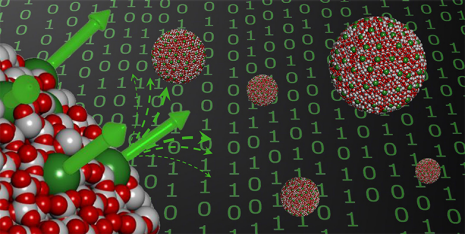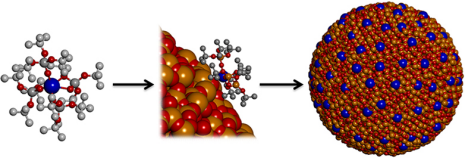
Imagine if a bit of data can be stored in a single atom or a small molecule, then massive volumes of data can be stored in a tiny amount of space. This theory was the topic of a research tries to develop a new method to store data magnetically in atoms.
As the magnetization of an atom can only be in one of two directions, theoretically we can magnetize the atom to be logical ‘1’ or ‘0’. But in the Practical application, this may be difficult because of some obstacles. At first we have to find a molecule that stores the magnetic information permanently, not only for a short period of time. Also it is difficult to attach such molecules to a fixed surface in order to construct a storage medium.
Christophe Copéret, a professor at the Laboratory of Inorganic Chemistry at ETH Zurich, and his international team of researchers had developed a method that could be a solution for these problems.
They developed a molecule that contains a dysprosium atom at its center, surrounded by a molecule frame that serves as a transport vehicle. This molecule is deposited on a surface of silica nanoparticles and fused by annealing at 400 degrees Celsius. The scientists showed that these atoms can be magnetized and can maintain their magnetic information.
The magnetization process currently only works at around minus 270 degree Celsius, and can be maintained for up to one and a half minute. The scientists are therefore looking for methods that allows it to be stabilized at higher temperatures and for longer periods of time.

For this research project, ETH scientists worked with colleagues from the Universities of Lyon and Rennes, Collège de France in Paris, Paul Scherrer Institute in Switzerland, and Berkeley National Laboratory in the USA.
You can find the full research here.

















